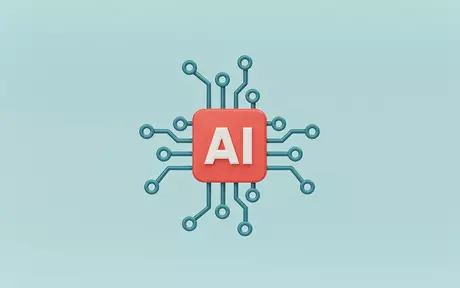
Managing talent in the era of the gig economy
How organizations must adapt to more fluid operating environments
The modern world of work is very different from the one that many of us began our careers in. Perhaps most visibly and most importantly, the notion of a “job for life” has almost vanished in many countries. According to Kelly Services, well over a third of workers worldwide consider themselves to be “free agents.”
“Free agent” is a term that covers more ground today than it ever has in the past. A free agent might be an independent contractor or outside consultant, the owner or operator of a business providing such services, temporary or contingent workers, freelancers, or anyone who draws their income from multiple jobs or other sources.
The emergence of this collection of project-based working models has been referred to in the press as the “gig economy” for the past several years. And this economy is only getting larger – having grown by about 15% globally in the last 12 years according to IDC. In this article, we’ll be exploring how you can leverage the talent of people who have committed to free agent workstyles to advance your business’s goals.
Different workstyles call for different management styles
With the vast majority of free agent workers saying they adopted their current workstyle by choice, HR leaders and managers are faced with a single question: “How do we manage these people?”
For people-centric organizations, the present shortage of particular skillsets and the ongoing scarcity of talent makes leveraging free agent workers more important than ever before. This requires leaders and managers across the organization – but particularly from HR – to change their approach to talent management and acquisition – including in the following ways.
Flexibility is now a necessity
Even after what COVID has shown us all about the possibilities and realities of flexible working, the need for flexibility can’t be overstated enough. Flexible working is a primary motivation for many choosing gig economy workstyles – especially across people-centric sectors like engineering and consultancy.
Flexibility in the context of gig economy free agents doesn’t just mean the freedom to work from any location, but the freedom to work at any time. This is, in fact, even more of a necessity as globally integrated teams become more and more common – companies can’t tell contractors when to work, any more than they can expect people in different time-zones to work at the same time.
Attracting gig economy workers and the skills they bring requires your organization to make flexibility a core part of your management of people – from culture to HR processes to management and leadership expectation.
Be prepared to address the legal realities
The growth of the gig economy has attracted a lot of scrutiny from governments and regulators in the past few years. Particularly insofar as the question of tax is concerned.
Until recently, many companies – particularly in service-based industries with high levels of seasonality and demand shifts where free agents are often preferable to permanent staff – have blurred the line between “full time employee”, “freelancer”, and “outside consultancy.” In many jurisdictions, this kind of line-blurring can actually be illegal, and may expose your organization to considerable legal and financial risk.
You’ll need to equip your organization with the tools, policies, and processes it needs to manage not just the legal and regulatory requirements of a permanent workforce, but of the gig economy workforce as well. Across all jurisdictions in which you operate.
Shifting to project-based working
Reconfiguring your operations around project-based workflows is not only an excellent way to streamline the process of staffing and resourcing, ensuring the right skills are matched with the right work, and guaranteeing both customer satisfaction and a swift billing process.
It will also help you to more effectively harness gig economy workers. The ability to forecast resource and skill needs for a project before it begins allows you to instantly identify when your people can do the job themselves, and when they’ll need outside help from a specialist. It can also help you to ensure that the parameters, formats, and deadlines inherent in the job will be clear to both your people and your free agent workers before the work begins, ensuring that they know exactly what to expect, and you can effectively control for project profitability.
You’ll need to get much better at measuring performance and engagement
One of the big advantages of project-based work for both your organization and your gig economy hires is that if either side is unhappy with the arrangement, they’re under no obligation to have it continue.
Being able to track both the performance and engagement of your people in real time is therefore a cornerstone of managing gig economy workers. Investing in a modern HCM solution that will allow you to do this will also make it significantly easier for your organization to move away from more traditional “one-size-fits-all” approaches to people management.
Keeping your pulse on culture becomes more important than ever
Contingent workers can have both a positive and negative impact on your culture. They tend to work faster and smarter, being retained for limited periods of time to handle specific bundles of work. This can drive up productivity by influencing others to work harder. But it can also have a negative effect on morale if gig economy workers aren’t able to work in line with what’s normally expected by everyone else as part of the day-to-day patterns of working.
This is, again, where the ability to quickly detect changes to engagement and productivity becomes critical, allowing you to spot when your organization’s normal working patterns are being negatively or positively disrupted and allowing you to respond to the situation more quickly.
How can Unit4 help you?
Unit4 have been creating software solutions that support people-centric sectors for over 40 years, and we’re well tuned to the realities organizations like yours operate in. Our ERP, FP&A, and HCM solutions are designed to work together to create a holistic and flexible operating environment that can accommodate any working pattern and workstyle – and give you the data you need across projects to ensure that the right work is being done by the right people to ensure a high delivery standard – whether that means using permanent staff, freelancers, or both.
To learn more about what our solutions can bring to your business, check out our dedicated product pages (linked above) or click here for further assistance, or here to book a demo.





